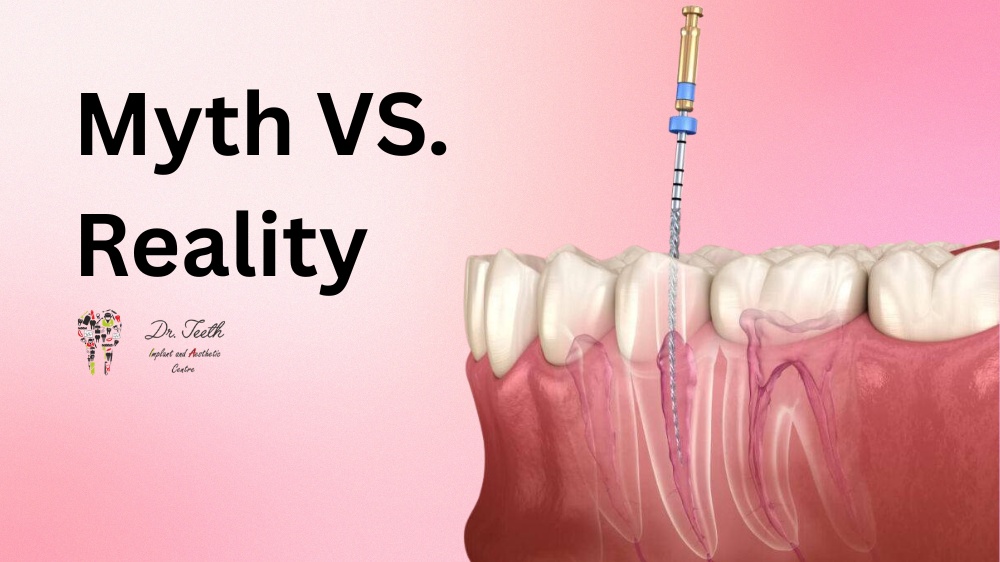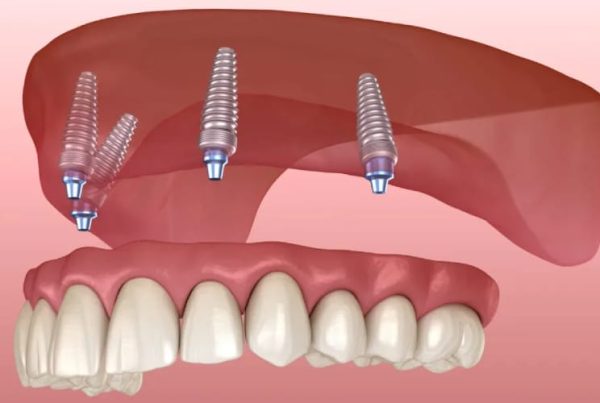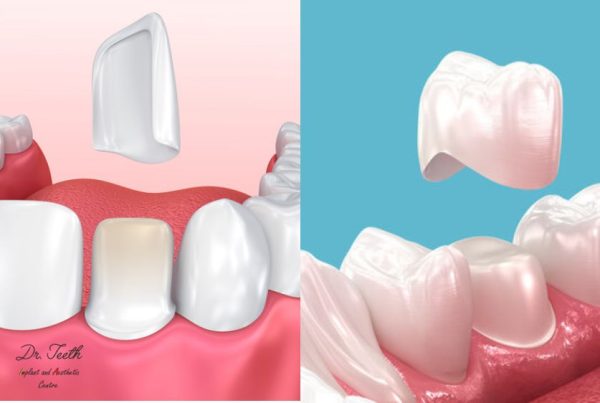Most people feel anxious when they hear “root canal treatment.” This fear comes from old stories and outdated information. Many patients delay or avoid this important dental procedure because of these myths.
Avoiding root canal treatment when you need it can make your dental problems much worse. Infections can spread, pain can increase, and you might lose your tooth completely.
Let’s clear up the confusion. We’ll separate root canal myths from root canal facts. You’ll learn what really happens during a root canal procedure and why modern treatment is nothing like the horror stories you’ve heard.
What is Root Canal Treatment?
Root canal treatment is a dental procedure that saves infected or badly damaged teeth. Inside every tooth is a soft tissue called pulp. This pulp contain nerves, blood vessels, and connective tissue. When this pulp becomes infected or inflamed, it causes intense discomfort and may result in significant problems.
During a root canal treatment, the dentist removes the affected pulp. They carefully clean the inside of each tooth. They then fill and seal the area to avoid additional infection.
Modern dentistry has made this process much easier for patients. Advanced anaesthesia procedures ensure that you do not feel any pain throughout treatment. Many patients report that getting a root canal feels similar to having a large filling done. Today’s painless root canal treatment uses the latest technology and proven pain management methods.
The procedure typically takes one to two visits. Dentists use digital images to see inside your teeth clearly. This helps them work more precisely and efficiently.
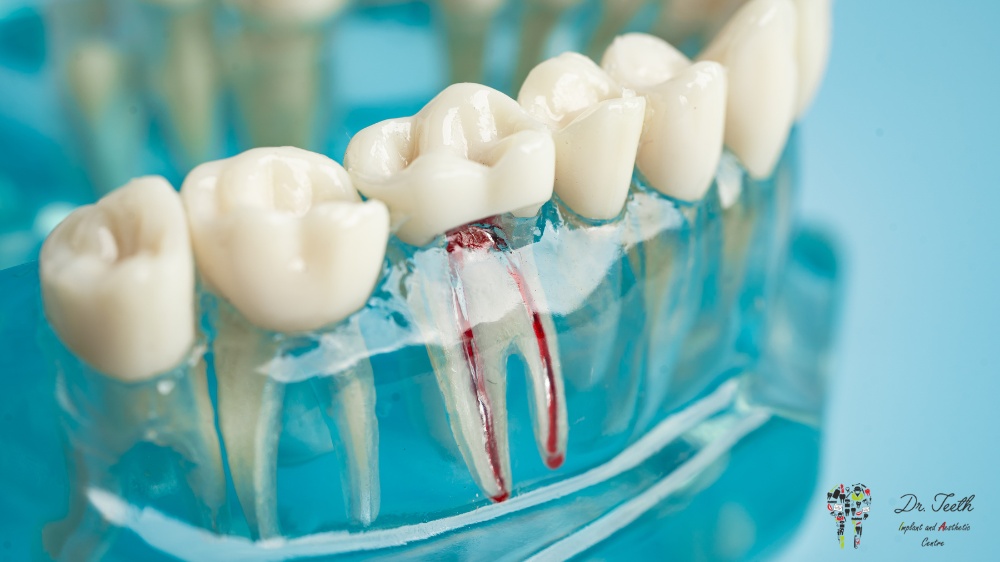
Common Myths About Root Canal Treatment & The Reality
Following are the most common misconceptions about root canal treatment:
| Myth | Reality |
| Root canal treatment is extremely painful | Modern anesthesia makes the procedure virtually painless. Most patients experience less discomfort than they expect. The pain relief after treatment is significant since the infection causing your toothache is removed. |
| Tooth extraction is better than root canal | Saving your natural tooth is always the best option when possible. Root canals preserve your ability to chew normally and maintain proper jaw alignment. Extractions require expensive replacements like implants or bridges. |
| Root canal causes illness | No scientific evidence supports this outdated claim. Major dental associations worldwide confirm that root canal treatment is safe. Modern sterilization techniques eliminate any risk of spreading infection. |
| Root canal doesn’t last long | When properly maintained, root canal treatment can last a lifetime. Placing a crown after treatment significantly increases longevity. Good oral hygiene and regular dental visits ensure the best results. |
| Root canal takes too many visits | Most root canal procedures are completed in just 1-2 visits. Modern techniques and equipment make treatment faster and more efficient. You’ll spend less time in the dental chair than you think. |
| Root canal weakens the tooth | A crown or large filling placed after root canal treatment actually strengthens the tooth structure. The tooth functions normally after healing. Many patients forget which tooth had the procedure. |
| Root canal is only needed if there’s severe pain | Sometimes root canal treatment is necessary before severe pain develops. Early treatment prevents infection from spreading to surrounding tissues. Your dentist can detect problems during routine checkups. |
| Root canal removes the tooth | Only the infected pulp inside the tooth is removed. The tooth structure, including roots and crown, remains intact. Your natural tooth stays in place and continues to function normally. |
| Root canal is unsafe during pregnancy | Root canal treatment is safe during pregnancy when proper precautions are taken. Leaving an infection untreated poses greater risks to both mother and baby. Your dentist will coordinate with your doctor as needed. |
| Root canal always fails | Modern root canal procedure have a success rate of over 95%. Proper aftercare and regular dental visits ensure the best results. The technique has been well researched and practiced.The technique has been refined over decades of research and practice. |
Benefits of Root Canal Treatment
Root canal treatment provides several important advantages for your oral health:
Preserve Natural Teeth
Your natural teeth are designed to last a lifetime. Root canal treatment allows you to keep your original tooth instead of having it extracted. This maintains the natural structure of your mouth and prevents neighboring teeth from getting shifted out of position.
Prevent Infection Spread
An untreated tooth infection can spread to surrounding tissues, jawbone, and other parts of your body. Root canal treatment eliminates the source of infection completely. This prevents serious complications that could require more extensive medical treatment.
Restore Chewing and Speaking Ability
After root canal treatment and proper restoration, your tooth functions exactly like your other teeth. You can chew your favorite foods without pain or sensitivity. Your speech patterns remain natural since your tooth structure is preserved.
Cost-Effective Compared to Alternatives
Root canal treatment followed by a crown is much less expensive than tooth extraction with replacement possibilities. Dental implants, bridges, and partial dentures are initially more expensive and require ongoing maintenance or replacement.
Long-Term Dental Health Improvement
Saving your natural tooth help maintain proper spacing between teeth. This makes cleaning easier and reduce the risk of future dental problems. Your bite remains balanced, preventing excessive wear on other teeth.
Tips for Patients Before & After Root Canal
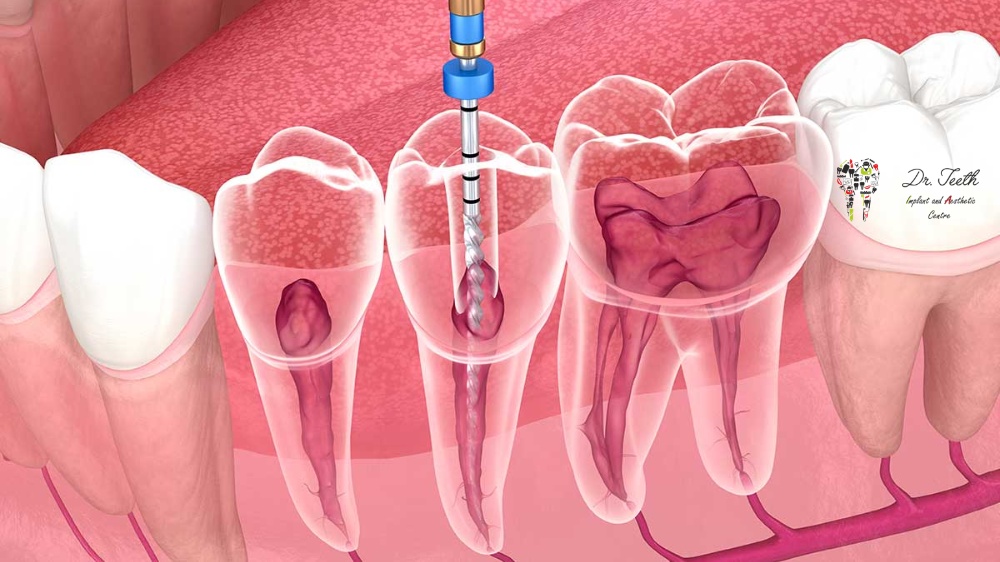
Before the Procedure
Choose an Experienced Dentist
Research your dentist’s qualifications and experience with root canal procedures. Ask about their success rates and patient satisfaction. Do not hesitate to seek a second opinion if you are unsure about the recommended treatment.
Discuss Anesthesia & Pain Management Options
Talk openly with your dentist about any anxiety or concerns you have. Modern pain management techniques can keep you completely comfortable during treatment. Some dentists offer sedation options for particularly nervous patients.
Follow Pre-Procedure Advice
Your dentist may prescribe antibiotics before treatment if you have an active infection. Take all medications exactly as directed. Eat a good meal before your appointment since you may have temporary numbness afterward.
After the Procedure
Take Prescribed Medications
Follow your dentist’s instructions for pain medication and antibiotics exactly. Even if you feel fine, complete the full course of any prescribed antibiotics. This prevents the infection from returning and ensure proper healing.
Avoid Chewing Hard Foods
Stick to soft foods for the first few days after treatment. Avoid nuts, hard candy, ice, and sticky foods as these may damage the temporary filling. As you heal, you can gradually return to your normal diet.
Maintain Oral Hygiene
Continue to brush and floss lightly around the treated tooth. Good dental hygiene is critical for optimal healing and long-term success. Use a soft-bristled toothbrush and go gently around the treatment area.
Attend Follow-Up Visits
Keep all scheduled appointments for your permanent restoration. The temporary filling is not designed to last long-term. Getting your crown or permanent filling promptly ensure the best outcome for your root canal recovery.
Conclusion
Root canal treatment is a safe, effective procedure that helps people save their natural teeth. The myths surrounding this treatment are based on outdated information from decades past. Modern techniques have transformed root canal procedure into routine, comfortable dental treatments.
Do not let fear or misinformation prevent you from getting the dental care you need. Today’s painless root canal treatment can eliminate your tooth pain and preserve your smile. If you’re experiencing tooth pain or have been told you need a root canal, consult with a qualified dentist to learn about your options.
The root canal treatment facts show that this procedure is one of the most successful treatments in dentistry. With proper care, your treated tooth can function normally for the rest of your life.

